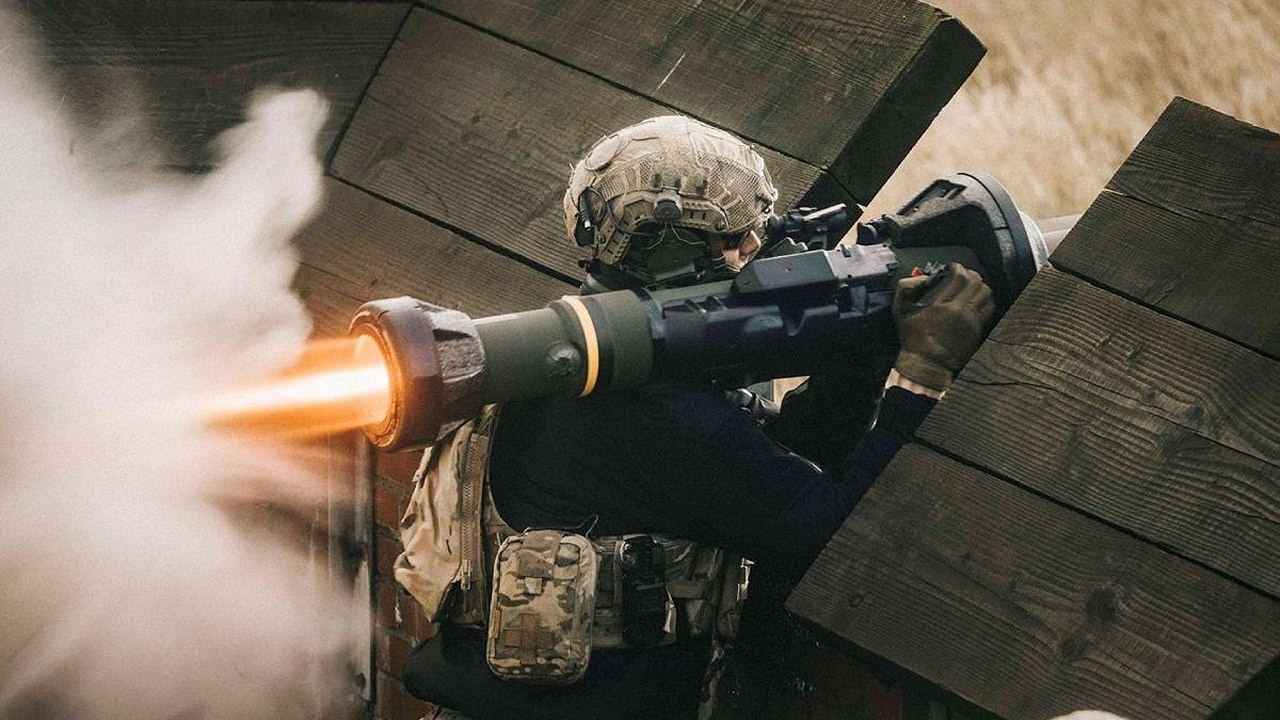The Javelin anti-tank missile has received much media attention and hype as it has blasted Russian armor in Ukraine. But there is another anti-tank missile making its presence known since the beginning of the war. The NLAW or Next-generation Light Anti-tank Weapon, was supplied by the British to Ukrainian fighters, and it has inspired the defenders with its success. This has led to a new era in which the golden age of tanks may be over.
What Is the NLAW?
The United Kingdom has provided several thousand NLAW launchers to Ukraine. It is a formidable weapon. The NLAW is a “one-shot one kill” shoulder-fired guided munition that can be used against tanks and armored vehicles. The 150mm penetrating warhead can destroy any tank up to 2,600 feet away.
It’s a Team Acquisition Effort
The British and the Swedes got together in 2002 to design the NLAW. It has components made by defense contractors such as Saab, BAE, Thales, and Raytheon. The weapon has a lifespan of 20-years, so it can be stored for a substantial amount of time and then be delivered to the battlefield for a stunning effect.
Easy to Transport
The NLAW is only three feet long and weighs 28-pounds – nicely portable. The great thing about the NLAW is that is can be strapped to the operator’s shoulder and enables the soldiers also to carry a rifle. Once it fires the missile, the launcher can be discarded, and then the operator can just grab another and mount up and move out to a different covered and concealed position. This is great to conduct ambush after ambush, which the Ukrainians have been doing against the Russians.
No Difficult Learning Curve for Training
The British delivered the NLAW to Ukrainian soldiers on the frontlines before the invasion started. So, the defenders have been trained on its use for months. It is straightforward to fire and allows new fighters to learn quickly – even those with little combat experience.
Just Shoot and Scoot
The missile can destroy stationary targets up to around 2,000-feet and moving targets to 1,300-feet. Upgraded versions have a range of 1,600-feet. The NLAW is “fire and forget” not wire-guided, which means the user doesn’t have to maintain a line of sight until it hits the target. It has “predicted line of sight” guidance instead. Operators sight in for three to five seconds, then launch. They can scoot away as the inertial guidance takes over. This is a plus in urban combat and in wooded areas with many places to hide.
Saab explains it this way, “With NLAW, you don’t need a platoon to attack tanks. You can train an ordinary soldier to use the system in an hour. And then you can have NLAW-equipped soldiers across the entire environment waiting for a tank to advance.”
The Golden Age of Tanks May Be Over
The Russians came into the war with a decided quantitative and even qualitative advantage in tanks. They assumed that fast armored columns could punch holes in Ukrainian defenses and speed to their objectives. Tank on tank warfare would then favor the Russians. Vladimir Putin’s forces never imagined that anti-tank missiles such as the Javelin and NLAW could be this effective. It even makes you wonder if tank-on-tank combat is becoming passe.
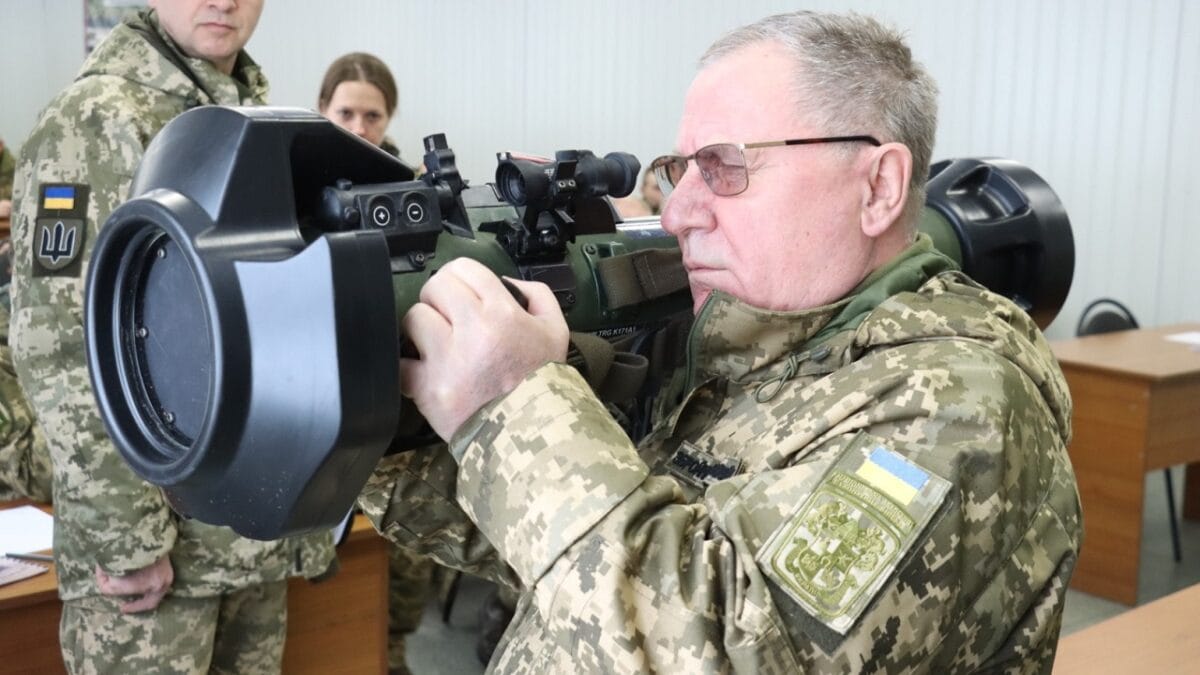
NLAW anti-tank missile in Ukraine. Image Credit: Ukrainian Military.
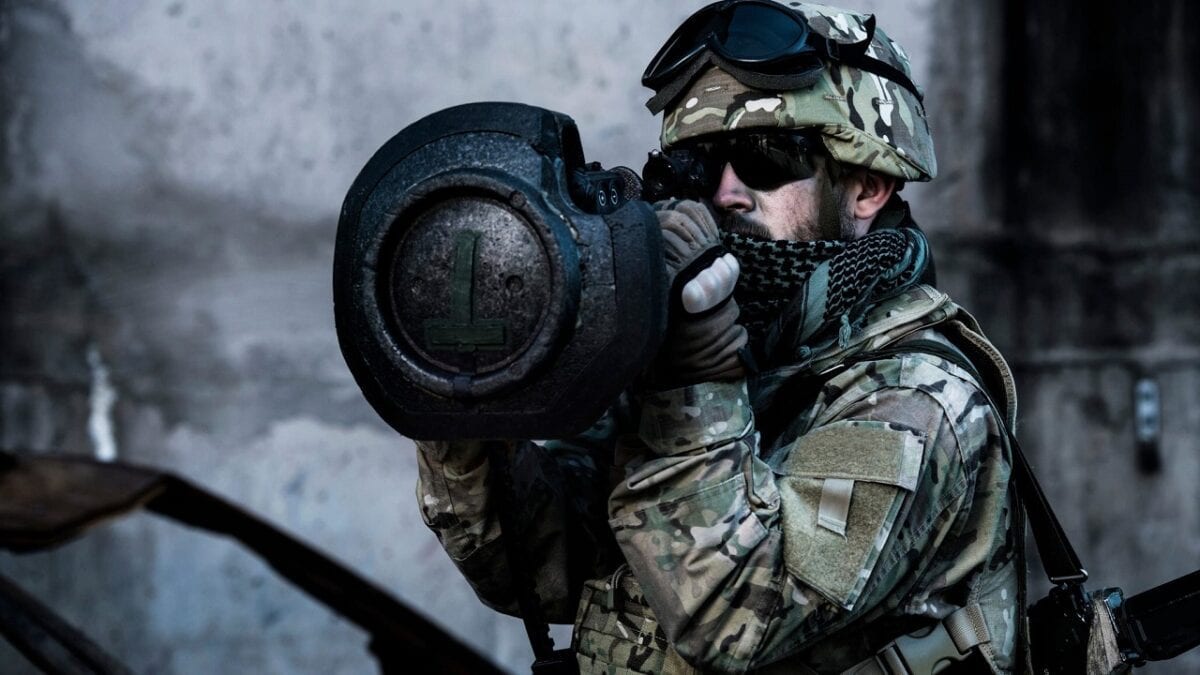
NLAW. Image Credit: SAAB.
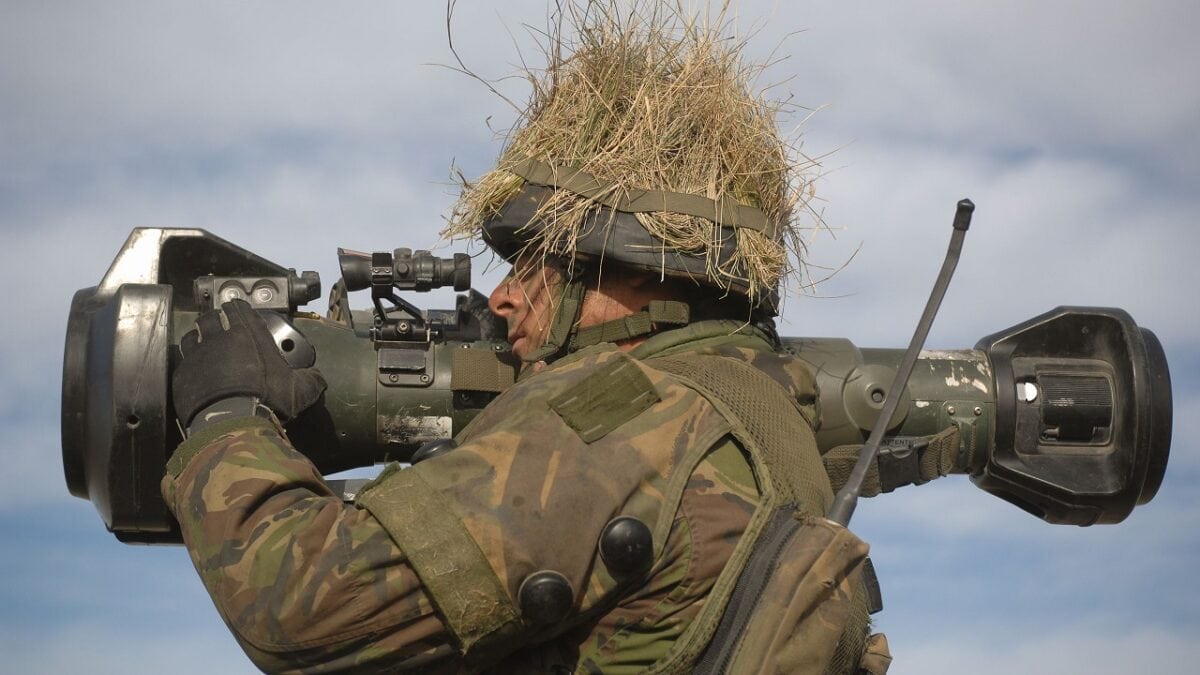
A soldier is pictured aiming a practice NLAW (Next Generation Light Anti-Tank Weapon). This training aid simulates the real NLAW launcher but fires a laser at armored vehicles equipped to receive the beam.
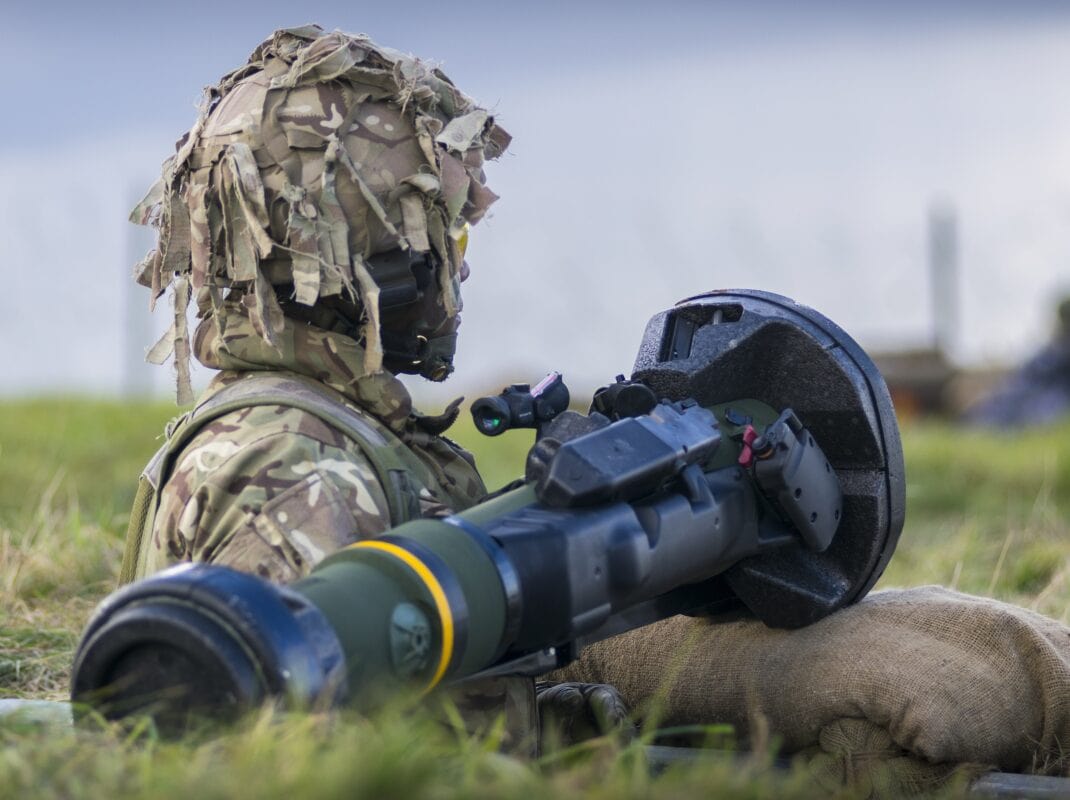
Russian Infantry Have Struggled
The Russians also assumed their infantry would be transported quickly to decisive points in critical urban and rural terrain. But Russian armored personnel carriers were destroyed handily by the Ukrainians. Without infantry support, it is difficult to win. Then the tanks, when they survive anti-tank missiles and drone attacks, get ahead of their supply trucks and run out of ammunition, fuel, and food. That leads to Russian soldiers just abandoning their tanks.
NLAW Created Despair in the Russian Ranks
This state of affairs can be traced back to anti-tank weapons such as the NLAW. The Russians have yet to adjust tactics and seem content backing off and using land-attack missiles and long-range artillery. But these stand-off practices do not allow the invaders to take and hold ground. So, the Ukrainians’ recipe for success is to order more of the relatively inexpensive NLAW launchers. The Russian tankers will not even know what hit them, and those that survive will operate their tanks in fear.
Now serving as 1945’s Defense and National Security Editor, Brent M. Eastwood, PhD, is the author of Humans, Machines, and Data: Future Trends in Warfare. He is an Emerging Threats expert and former U.S. Army Infantry officer. You can follow him on Twitter @BMEastwood.

